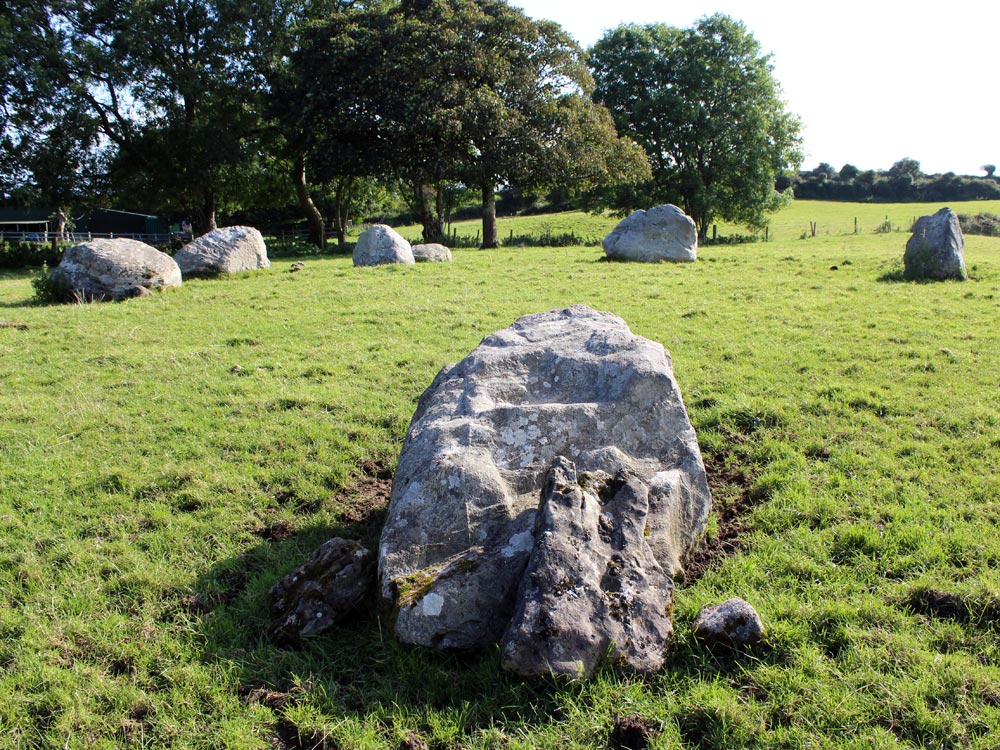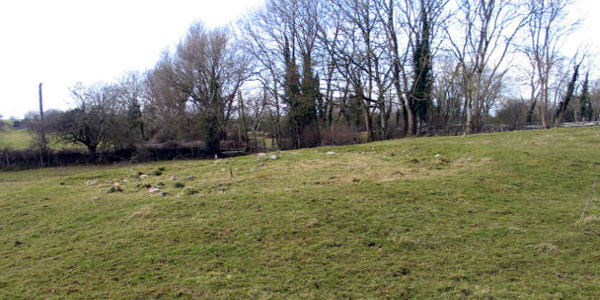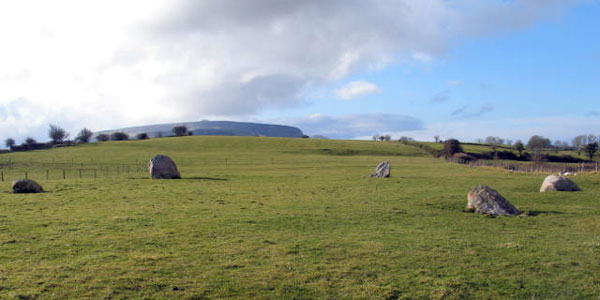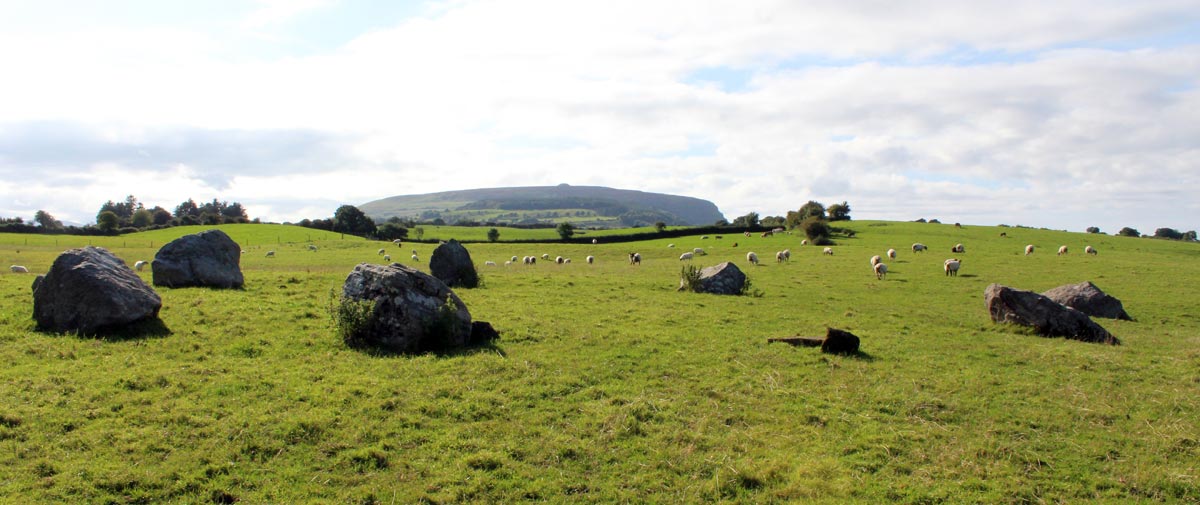Site 11
Three interesting "spaced boulder circles" are found a few hundred meters to the north of Carrowmore, which may well be a later bronze homage or tribute to the larger and older collection of neolithic circles up the hill. Petrie numbered the monuments and included them in his total during his survey of Carrowmore in 1837, but they are not neolithic and are not considered a primary part of the Carrowmore complex. These circles are on private land and are not accessible to the public.
Site 11 had been reduced to four large stones by the time Petrie saw it in 1837. It may have been some type of large spaced boulder circle.
Site 11A is a ring barrow, with an outer diameter of sixteen meters and an inner diameter of seven meters. It dates from the Bronze age and so may be up to a thousand years younger than the neolithic passag graves up the hill.
Site 11B was also destroyed by the time Petrie recorded it.
Borlase: - No. 11 (I).
Situated southwest of 14 (dolmen-circle). "Of this circle, four stones only now remain in their original position. The remainder, with the cromleac, were destroyed or removed by the peasant who holds the ground, about five years ago" - i.e. five years before 1837.
11 (2). "Between 15 and the road" (dolmen-circle).
"There are several very large stones here, which, with others that were blasted, formed, according to the peasantry, another circle."
- Petrie.
N.B. - "Here the chain of circles towards the north appears to have ended, and the next examined were those situated to the east of the road from Sligo. towards the south."
- Petrie.

11A. About 100 yards to the northeast of XIV (dolmen-circle and cairn).
"Unnoticed by Petrie. It is about 55 feet in diameter, and appears to have consisted of two concentric circles. Only two of the stones remain in situ. The diameter of the inner circle is 23 feet. The space between the circles is hollowed. Near these remains, towards the centre of the field is a small cairn, probably formed in clearing the field."
--Wood-Martin.
Site 12
This site, along with Site 11A, is a ring barrow, and dates from the Bronze age. Ring barrows are basically a small mound - the barrow - surrounded by an earthen ring. The mound here measures fiveand a half meters across, and the ring is seventeen meters in diameter. Petrie noted some kind of a stone box or cist at the centre of this monument.

Borlase: - No. 12.
Situated near the road, and east-northeast of 12 (circle with cist or small dolmen).
"This circle is composed of small stones mixed with earth, and is 40 feet in diameter. There is a stone sepulchre in the centre, but no cromleac."
- Petrie.
This implies that Petrie considered this as a transitional monument, neither a dolmen-cairn nor a cairn with cists.
"The whole is now so covered with so that it might pass unnoticed but for Petrie's description of it."
- Wood-Martin.
The plan of this monument shows three concentric circles of small contiguous stones, built with the regularity of a well-built stone fence, the outermost ring facing outwards, the two inner ones inwards.

No. 12A. "Not far off No. 12, and lying between it and the Caltragh" (No. 60) (dolmen-circle). "Seemingly the traces of another circle."
- Wood-Martin.
These monuments seem to represent an attempt to form their own ritual space close to the ancient and impressive collection of circles up the hill. This location has fantastic views to Knocknarea which looms large in the west.


